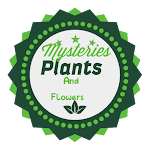The unassuming mullein, often dismissed as a weed, possesses a surprising depth of intrigue. Beyond its majestic stature and velvety leaves, this versatile plant harbors numerous mysteries that continue to captivate researchers and herbalists alike. Delve into these 18 fascinating aspects of the mullein:
1. A History Steeped in Mystery:
Mullein's use dates back millennia, with mentions in ancient Egyptian texts and depictions in Celtic folklore. Its diverse applications, from torches to medicinal remedies, fueled various myths and legends, shrouding its origins in a veil of mystery.
2. The Power of Pubescence:
The mullein's leaves are covered in fine hairs, often mistaken for irritants. However, these hairs, known as trichomes, play a crucial role in deterring herbivores and regulating moisture levels, adding another layer of complexity to its defensive mechanisms.
3. A Beacon in the Dark:
Traditionally, dried mullein stalks were dipped in fat and used as torches, earning it the nickname "common mullein" or "feltwort." The plant's woolly leaves provided excellent fuel, contributing to its historical significance.
4. A Lunar Connection:
Some cultures associated the mullein with the moon, believing its growth and flowering cycles were influenced by lunar phases. This association further fueled its mystique and symbolic meaning in various traditions.
5. The Whispering Leaves:
The mullein's dry leaves, when rubbed together, emit a rustling sound. This intriguing phenomenon, attributed to the movement of air trapped between the leaf hairs, has sparked various interpretations and folklore surrounding the plant.
6. A Friend to Pollinators:
While often considered a weed, the mullein's vibrant flowers attract a diverse range of pollinators, including bees, butterflies, and hummingbirds. This ecological contribution highlights its role in maintaining healthy ecosystems.
7. Unveiling the Medicinal Muse:
Mullein has a long history of use in traditional medicine for various ailments, including respiratory issues, skin conditions, and wound healing. However, the scientific evidence supporting these claims is still under investigation, and responsible use under medical guidance is crucial.
8. The Debate on Safety:
While some studies suggest potential benefits of mullein for specific conditions, others raise concerns about potential side effects and interactions with medications. Further research is necessary to establish its safety and efficacy for various applications.
9. A Master of Adaptation:
Mullein exhibits remarkable resilience, thriving in diverse habitats, from dry meadows to disturbed soils. Its adaptability allows it to establish itself in various environments, contributing to its widespread presence.
10. The Mystery of the Fairy Purse:
In some cultures, the mullein's seed capsule, resembling a pouch, was associated with fairies and believed to hold magical properties. This folklore adds another layer of charm and intrigue to the plant's multifaceted nature.
11. A Canvas for Nature's Art:
The mullein's leaves often serve as a canvas for various insects and fungi. These intricate interactions create a fascinating microcosm within the plant, showcasing the interconnectedness of nature.
12. A Natural Moth Repellent:
Studies suggest that mullein leaves may possess properties that repel moths and other insects. This potential application adds another dimension to the plant's diverse functionalities.
13. A Champion of Soil Health:
Mullein's deep taproot system helps aerate the soil, improving drainage and nutrient availability for other plants. This ecological contribution highlights its role in maintaining healthy soil ecosystems.
14. A Source of Sustainable Fuel:
Mullein stalks have been explored as a potential source of biofuel, offering a renewable and eco-friendly alternative to traditional fossil fuels. Research into this application is ongoing, with promising possibilities for the future.
15. Unveiling the Antibacterial Potential:
Recent studies suggest that mullein extracts may possess antibacterial properties against certain strains of bacteria. Further research is needed to explore this potential and its implications for various applications.
16. A Natural Dye:
The mullein plant has been used historically as a natural dye for textiles, producing a range of yellow and green hues. This traditional application showcases the plant's diverse historical uses beyond its medicinal value.
17. A Potential Weed Warrior:
Mullein's allelopathic properties, meaning it releases chemicals that inhibit the growth of other plants, have been explored as a natural weed control method. However, further research is needed to assess its effectiveness and potential ecological implications.
18. The Future of Mullein Research:
As scientific exploration continues, the mysteries surrounding the mullein plant are gradually being unveiled. Its potential applications in medicine, industry, and environmental sustainability hold promise for the future, making it a plant worthy of further investigation and appreciation.
From its historical significance to its potential future applications, the mullein plant continues to surprise and intrigue. While some mysteries remain to be unraveled, its multifaceted nature and potential benefits highlight its unique place in our world. As we continue to explore the secrets of this versatile plant, the mullein's story is far from over, offering exciting possibilities for the future of medicine, ecology, and beyond.



